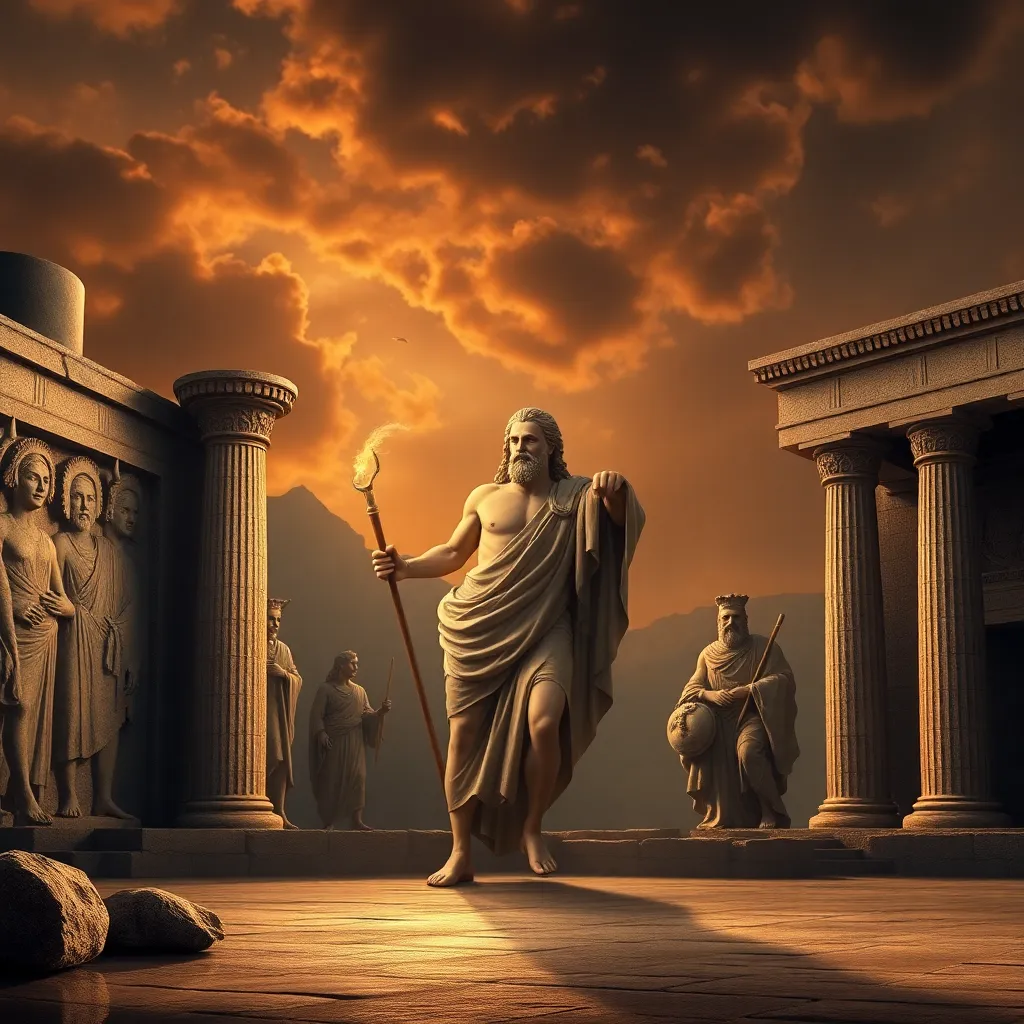The Role of Dionysus in the Development of Greek Theater
I. Introduction
Greek theater is one of the most significant contributions of ancient Greece to the world, providing a window into the cultural, social, and political life of the time. Its origins can be traced back to ancient rituals and celebrations, particularly those dedicated to the gods. Among these deities, Dionysus stands out as a pivotal figure in Greek culture, embodying the spirit of revelry, creativity, and the human experience.
This article explores the profound connection between Dionysus and the evolution of theater, emphasizing how the god’s attributes and worship influenced the development of dramatic art forms that continue to resonate today.
II. Historical Context of Dionysus in Ancient Greece
Dionysus, known as the god of wine, fertility, and ecstasy, is a complex figure in Greek mythology. His myths often reflect themes of transformation, duality, and the liberation of the human spirit. The legends surrounding Dionysus often highlight his journey from a vulnerable infant to a powerful deity capable of inspiring both joy and madness among his followers.
The significance of Dionysian worship in Greek society cannot be overstated. The rituals associated with Dionysus were not merely religious observances; they represented a communal celebration of life, nature, and the cyclical patterns of existence. His association with wine symbolizes the joys of life, while his ecstatic rites reflect the breaking of societal norms and the exploration of deeper human emotions.
III. The Festival of Dionysia
The Festival of Dionysia, held annually in Athens, was one of the most important celebrations in ancient Greece. It honored Dionysus and featured a series of dramatic competitions that showcased the talents of playwrights and performers. This festival was not only a religious event but also a cultural spectacle that drew large crowds from the city and surrounding areas.
- Description of the Festival: The festival included processions, sacrifices, and performances of tragedies and comedies.
- Significance: It served as a platform for playwrights to present their works, thereby promoting theatrical performances.
- Relation to Ritual: The performances were deeply intertwined with religious rituals, often depicting mythological narratives that conveyed moral and philosophical lessons.
IV. The Birth of Tragedy
The emergence of tragedy as a distinct theatrical form can be traced back to the rituals honoring Dionysus. Tragedies often explored themes of fate, suffering, and the human condition, reflecting the complexities of life and morality. Dionysian themes, such as the struggle between order and chaos, played a crucial role in shaping these narratives.
Key playwrights of the time, including Aeschylus, Sophocles, and Euripides, utilized Dionysian motifs in their works. For instance:
- Aeschylus: Known for his plays like “Agamemnon,” which explore themes of justice and revenge.
- Sophocles: His masterpiece “Oedipus Rex” delves into fate and tragic flaws.
- Euripides: Works such as “The Bacchae” directly engage with the nature of Dionysus and the consequences of denying his divinity.
V. The Birth of Comedy
While tragedy captured the darker aspects of human experience, comedy emerged as a lighter counterpart, often reflecting the joyous and chaotic spirit of Dionysian celebrations. The evolution of comedy was closely linked to the festivities of Dionysus, where satire and humor were used to critique societal norms and politics.
Notable figures in comedy, such as Aristophanes, utilized Dionysian themes to craft plays that offered social commentary. His works, including “Lysistrata” and “The Clouds,” employed humor to address serious issues, demonstrating the power of laughter as a tool for reflection and change.
VI. Dionysus and the Theatrical Space
The architectural influence of theaters built for Dionysian festivals played a significant role in the development of Greek theater. Theaters, such as the Theatre of Dionysus in Athens, were designed to accommodate large audiences and enhance the theatrical experience.
- Outdoor Spaces: The use of natural landscapes created a unique connection between the audience and the performance.
- Acoustics: The design of theaters maximized sound projection, allowing the voices of actors to be heard clearly without modern amplification.
- Communal Experience: Theaters became cultural hubs where society gathered to witness shared stories, fostering a sense of community and collective experience.
VII. Legacy of Dionysus in Contemporary Theater
The legacy of Dionysus continues to resonate in contemporary theater, where themes of ecstasy, chaos, and transformation are still prevalent. Modern playwrights and theater artists draw inspiration from Dionysian values, reflecting the complexity of the human experience through their works.
Examples of how contemporary theater reflects Dionysian influences include:
- Modern Adaptations: Many contemporary plays reinterpret ancient works, infusing them with modern themes and contexts.
- Dramatic Techniques: The use of improvisation and audience interaction mirrors the spontaneity of ancient Dionysian festivals.
- Exploration of Identity: Themes of duality and transformation are prevalent in modern narratives, echoing Dionysian motifs.
VIII. Conclusion
Dionysus’s multifaceted role in the development of Greek theater highlights the intricate relationship between mythology and the arts. The god’s influence is evident in the emergence of tragedy and comedy, the architectural evolution of theatrical spaces, and the enduring themes that continue to inspire contemporary drama.
Understanding the significance of Dionysus in the context of Greek theater allows for a deeper appreciation of the cultural arts and their roots in mythology. As we reflect on the relevance of Dionysian elements in today’s theatrical landscape, it becomes clear that the celebration of life, creativity, and the human experience remains at the heart of theater, transcending time and culture.




